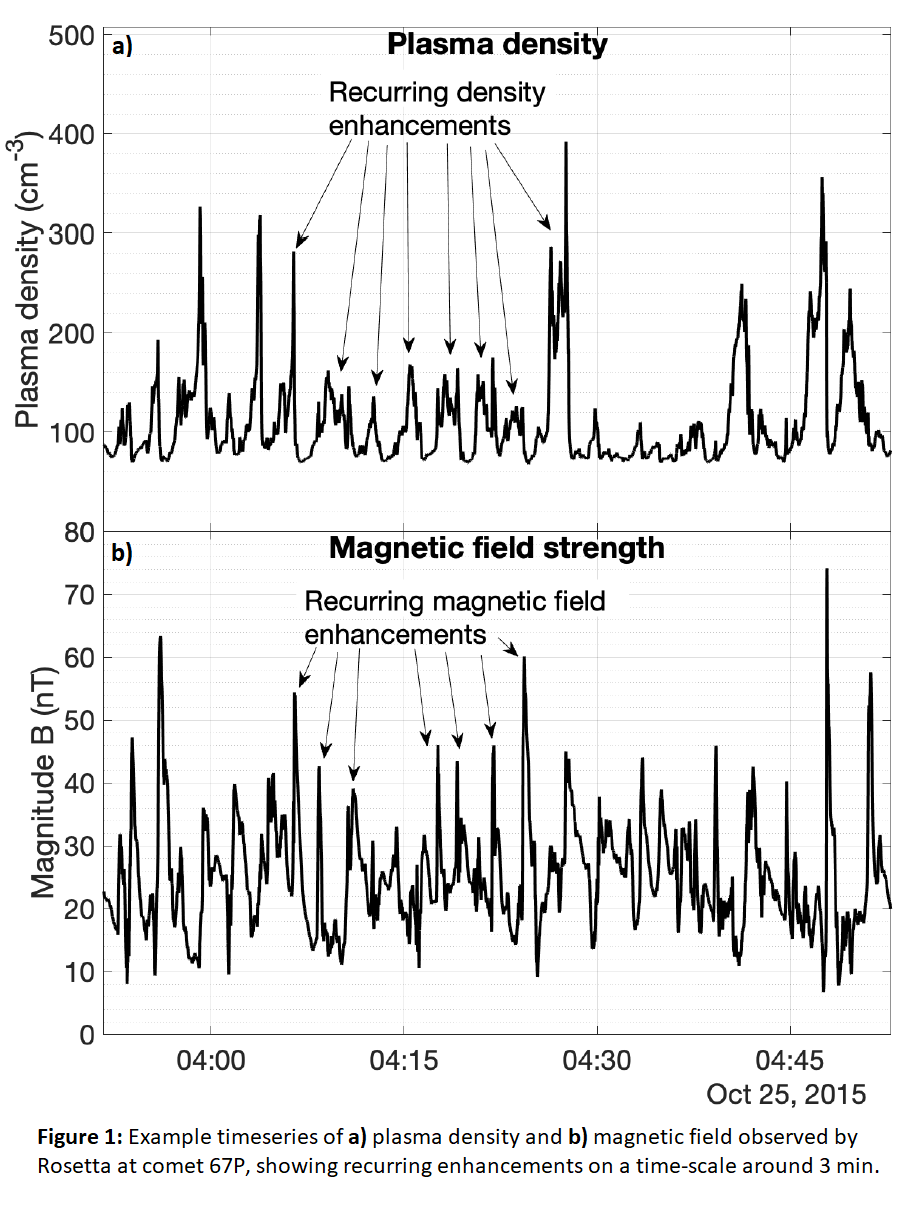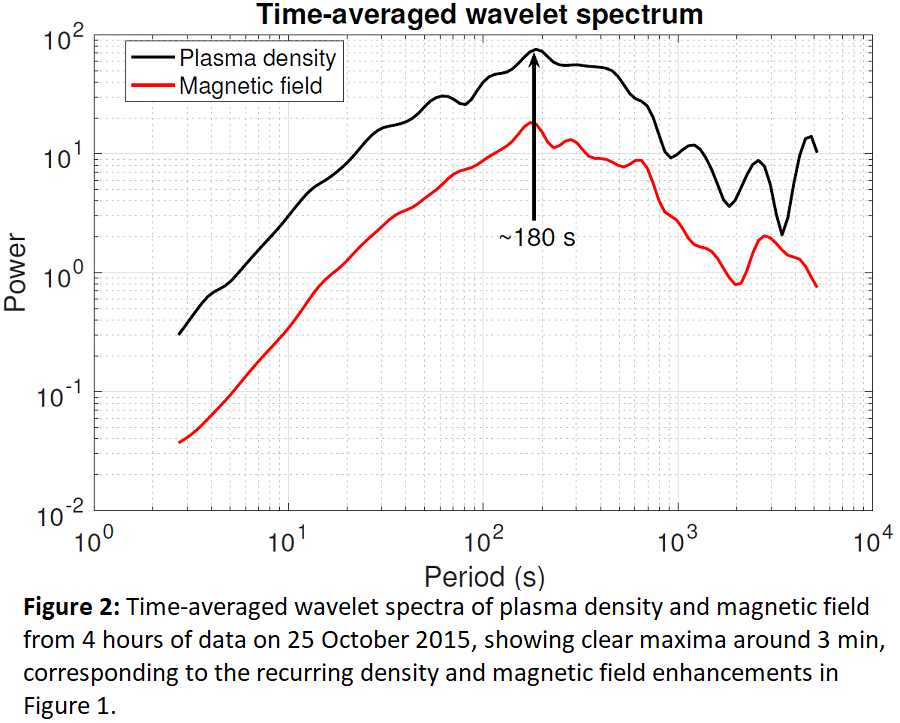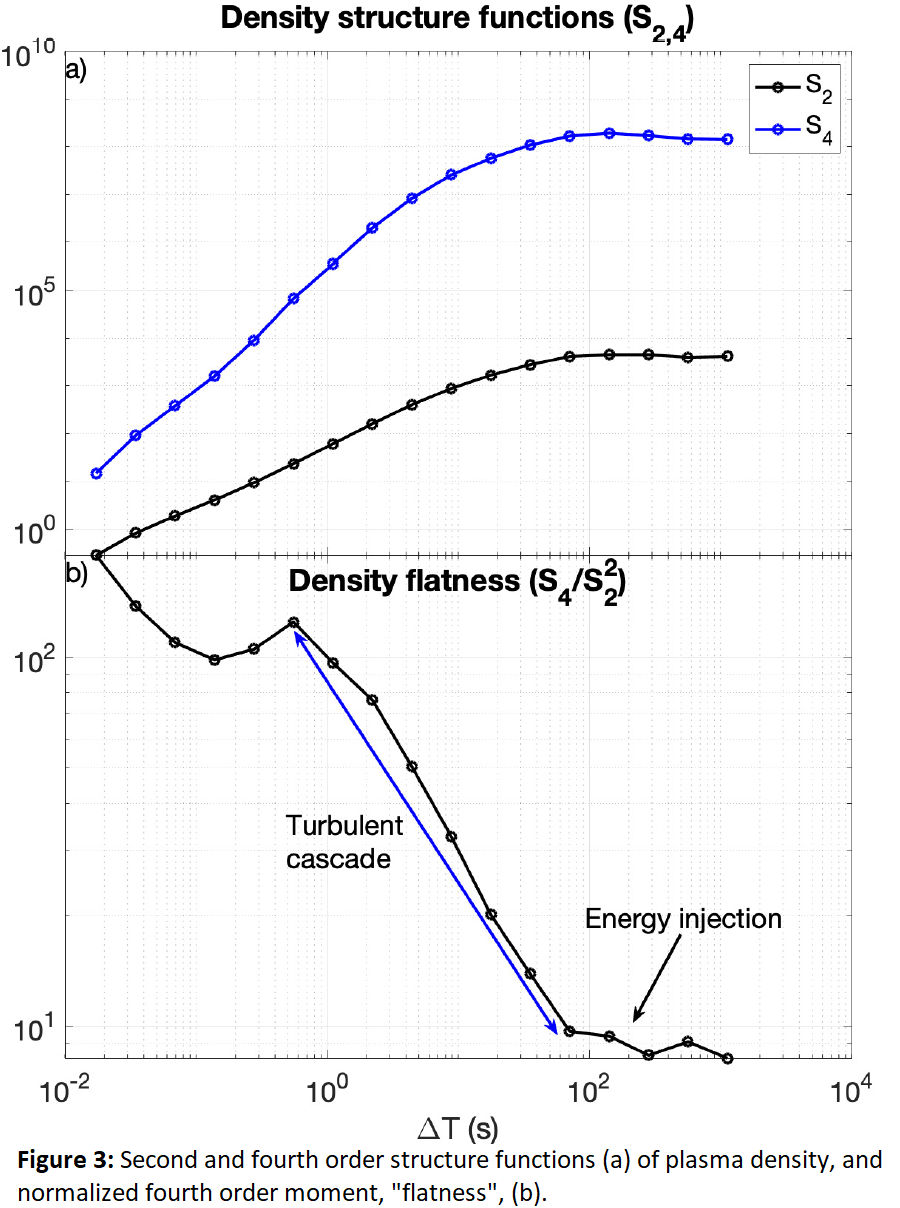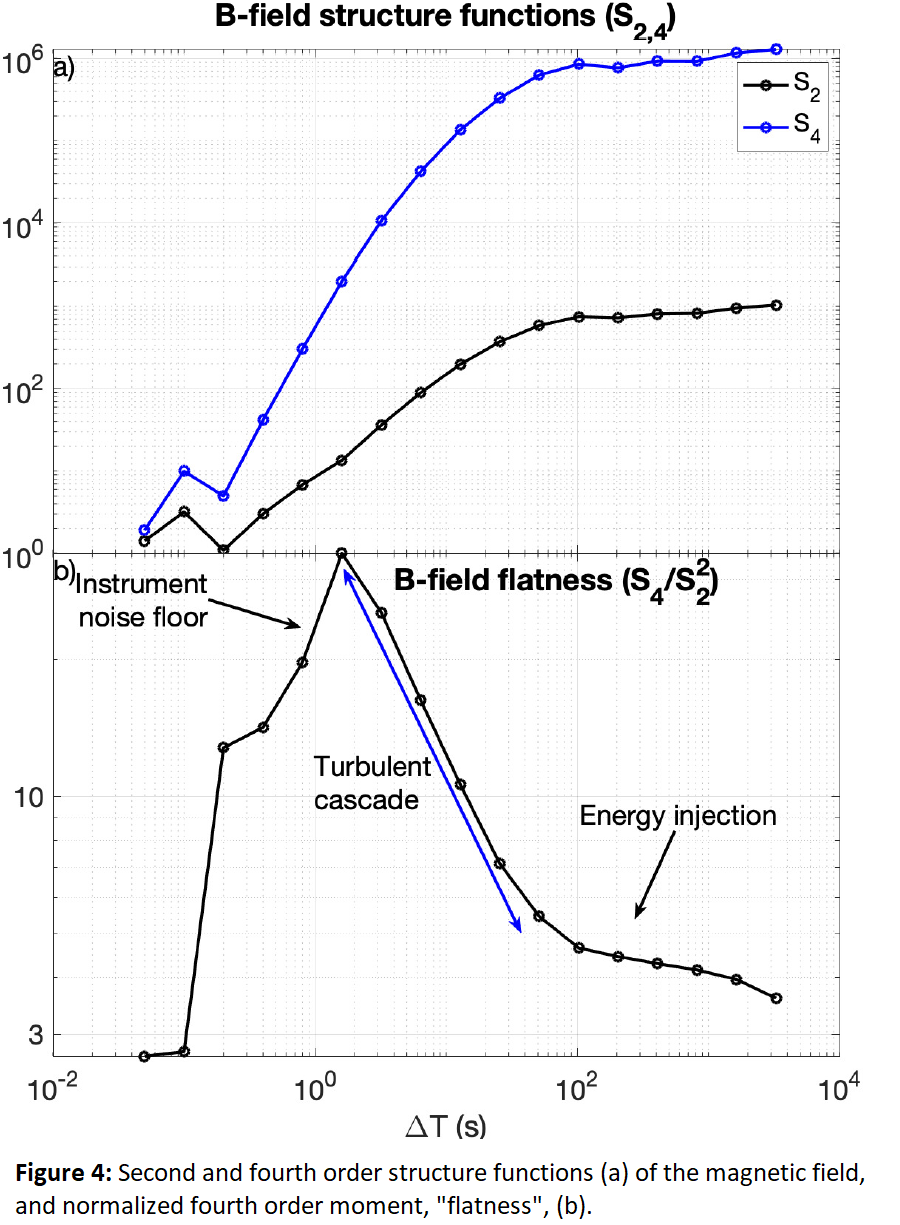Plasma turbulence at comet 67P
- 1Swedish Institute of Space Physics, Uppsala, Sweden
- 2KTH Royal Institute of Technology, Stockholm, Sweden
- 1Swedish Institute of Space Physics, Uppsala, Sweden
- 2KTH Royal Institute of Technology, Stockholm, Sweden
The ionospheres of comets are complex systems, where dynamic phenomena such as plasma instabilities and turbulence commonly occur as a consequence of the coupling processes between solar wind and cometary plasma. The analysis of fluctuations of plasma density, magnetic and electric fields observed by ESA’s Rosetta spacecraft during its 2-year mission to comet 67P/Churyumov-Gerasimenko suggest the existence of a turbulent state in the cometary plasma environment, which may be at the heart of important dynamical processes and have consequential impact on the cross-scale coupling.
Rosetta’s prolonged stay in the inner plasma environment of 67P provided the instruments of the Rosetta Plasma Consortium (RPC) with an unprecedented long-term view of the inner coma and plasma environment of an intermediately active comet. We use data from the Langmuir probe (RPC-LAP), magnetometer (RPC-MAG) and mutual impedance probe (RPC-MIP) to investigate the fluctuations and dynamics of plasma density, magnetic and electric fields across time-scales from ~10-1-103 s. Recurring density enhancements of several hundred percent occur on typical time scales of a few minutes, c.f. Figure 1a. Similar enhancements are also seen in the magnetic field magnitude, though not quite as large (δB/B~1), c.f. Figure 1b. Time-averaged wavelet spectra of both density and magnetic field from a 4-hour interval (including the example time series in Figure 1), c.f. Figure 2, exhibit clear maxima at a period of about 3 minutes, quantifying and confirming the importance of this characteristic time scale in the cometary plasma environement, at least for this time period.
The observed 3-min structures represent a source of energy, corresponding to a peak in the power spectral density and to the saturation scale of the second order structure function of the field fluctuations, c.f. Figures 3a and 4a. At shorter time scales, spectra show power law scaling with exponents close to 5/3, typical of Kolmogorov turbulence. A power-law scaling range is also observed between 3 min and ~1 s for the normalized fourth-order moment of the scale-dependent fluctuations, the "flatness", a standard indicator of intermittency in turbulence, shown in Figures 3b and 4b. The scaling exponent of the flatness is comparable with typical observations in the turbulent solar wind. Kolmogorov spectra and strong intermittency are a robust indication that the dynamics is dominated by nonlinear interactions, which induce a cross-scale transfer of energy, the so-called turbulent cascade, over a broad range of smaller scales. This turbulent cascade can heavily influence particle heating and acceleration at the comet, as well as the structure and dynamics of the plasma in the inner coma, and thus play an important role for shaping the cometary plasma environment.




How to cite: Odelstad, E., Sorriso-Valvo, L., Eriksson, A., and Karlsson, T.: Plasma turbulence at comet 67P, Europlanet Science Congress 2022, Granada, Spain, 18–23 Sep 2022, EPSC2022-1140, https://doi.org/10.5194/epsc2022-1140, 2022.

